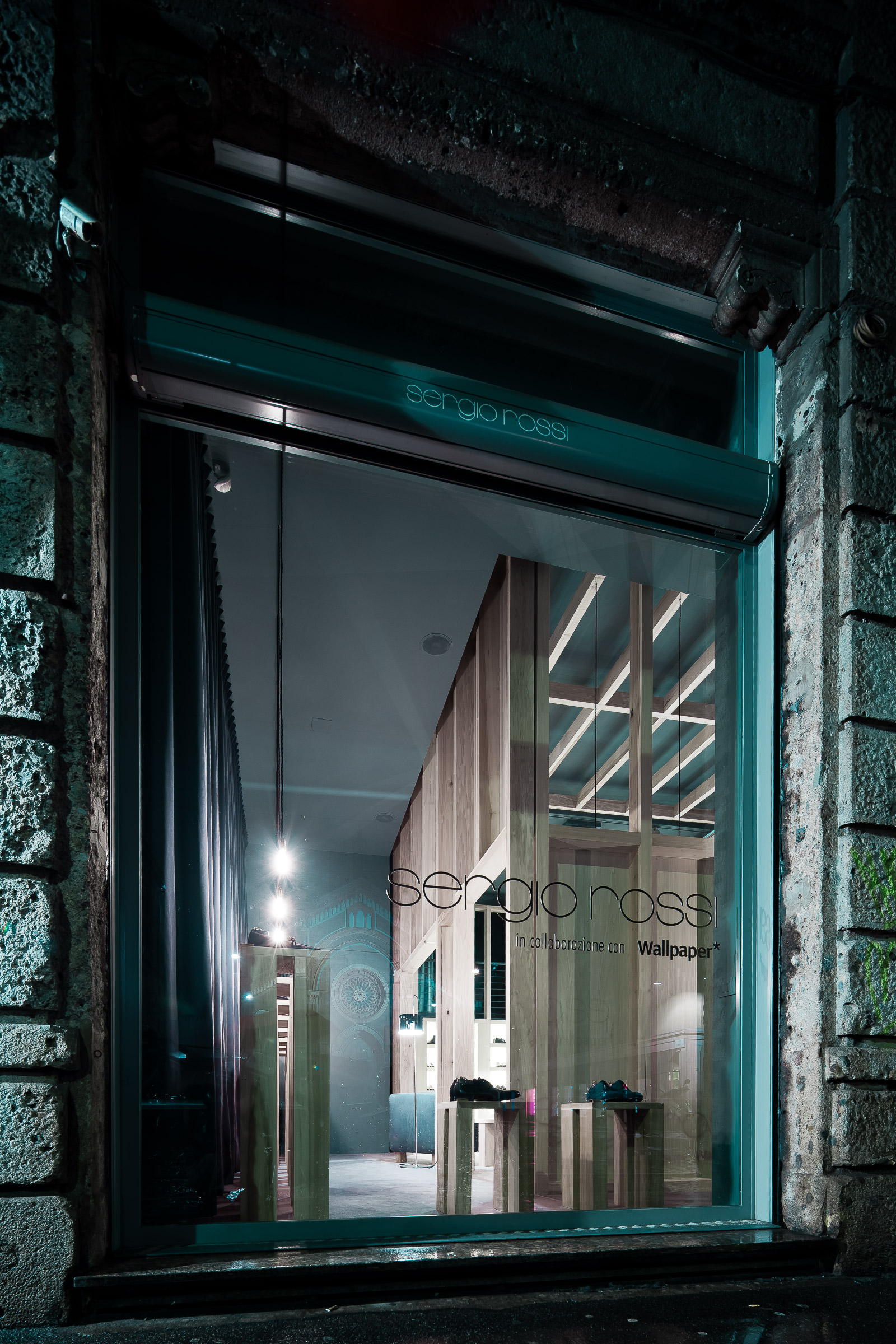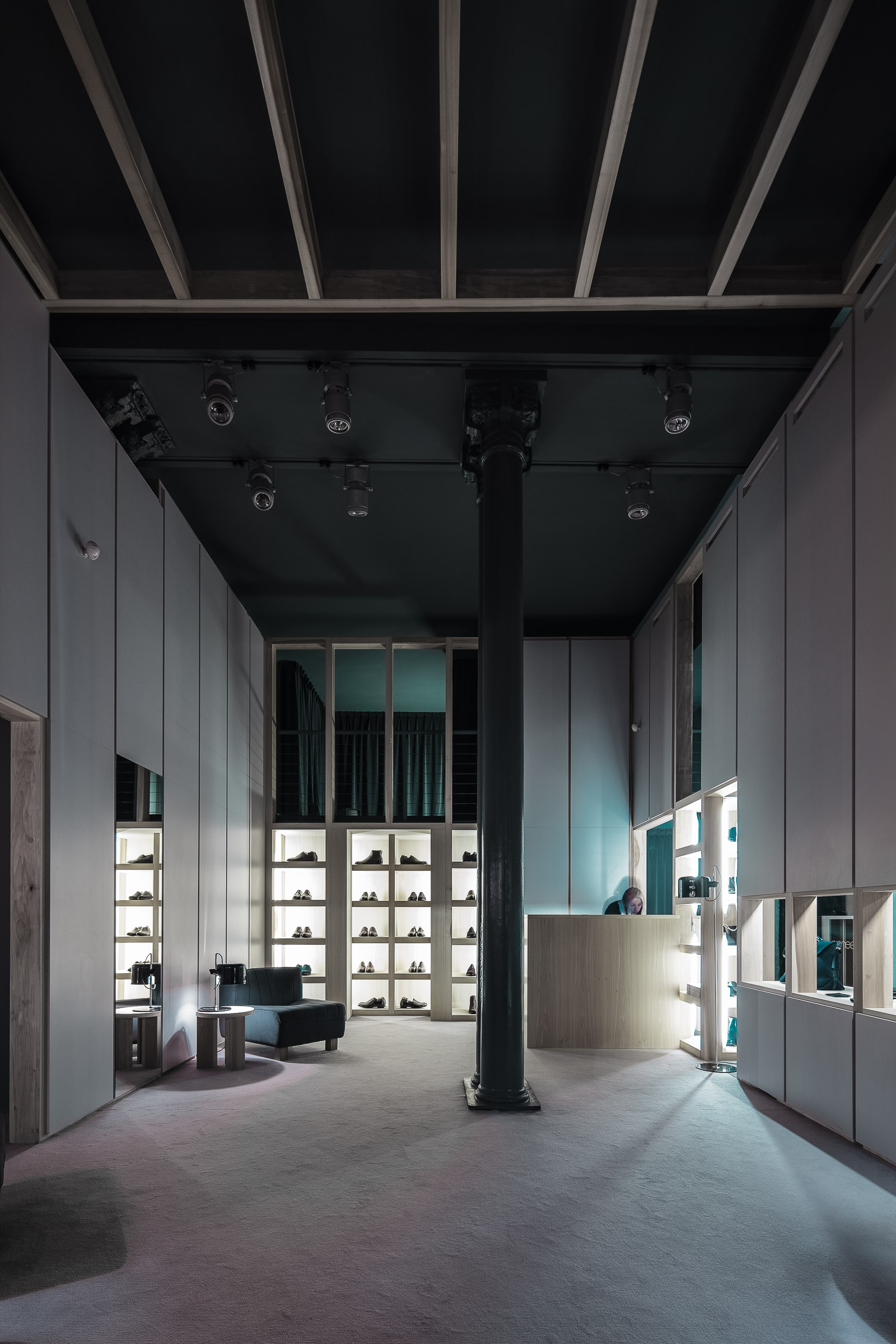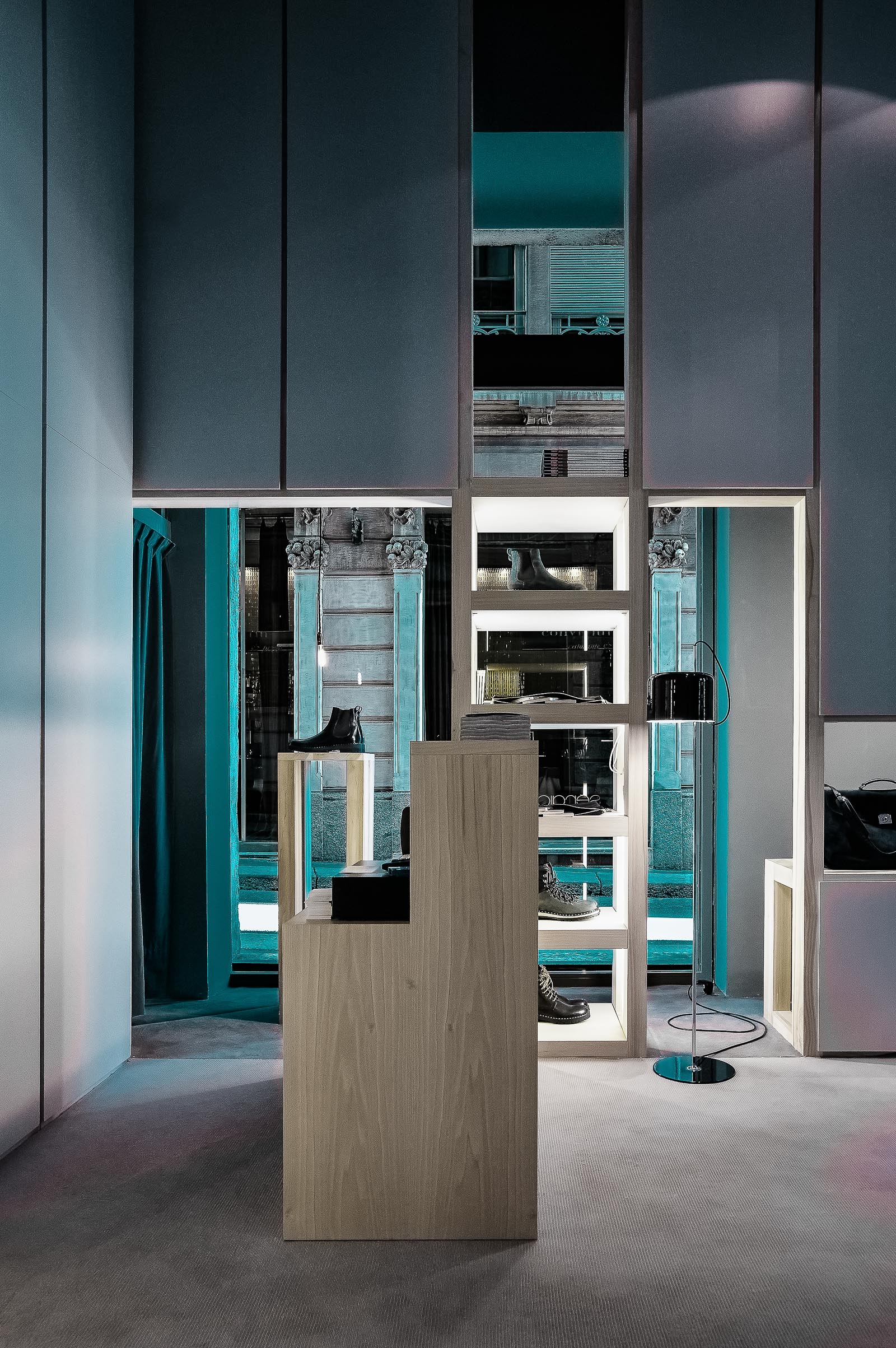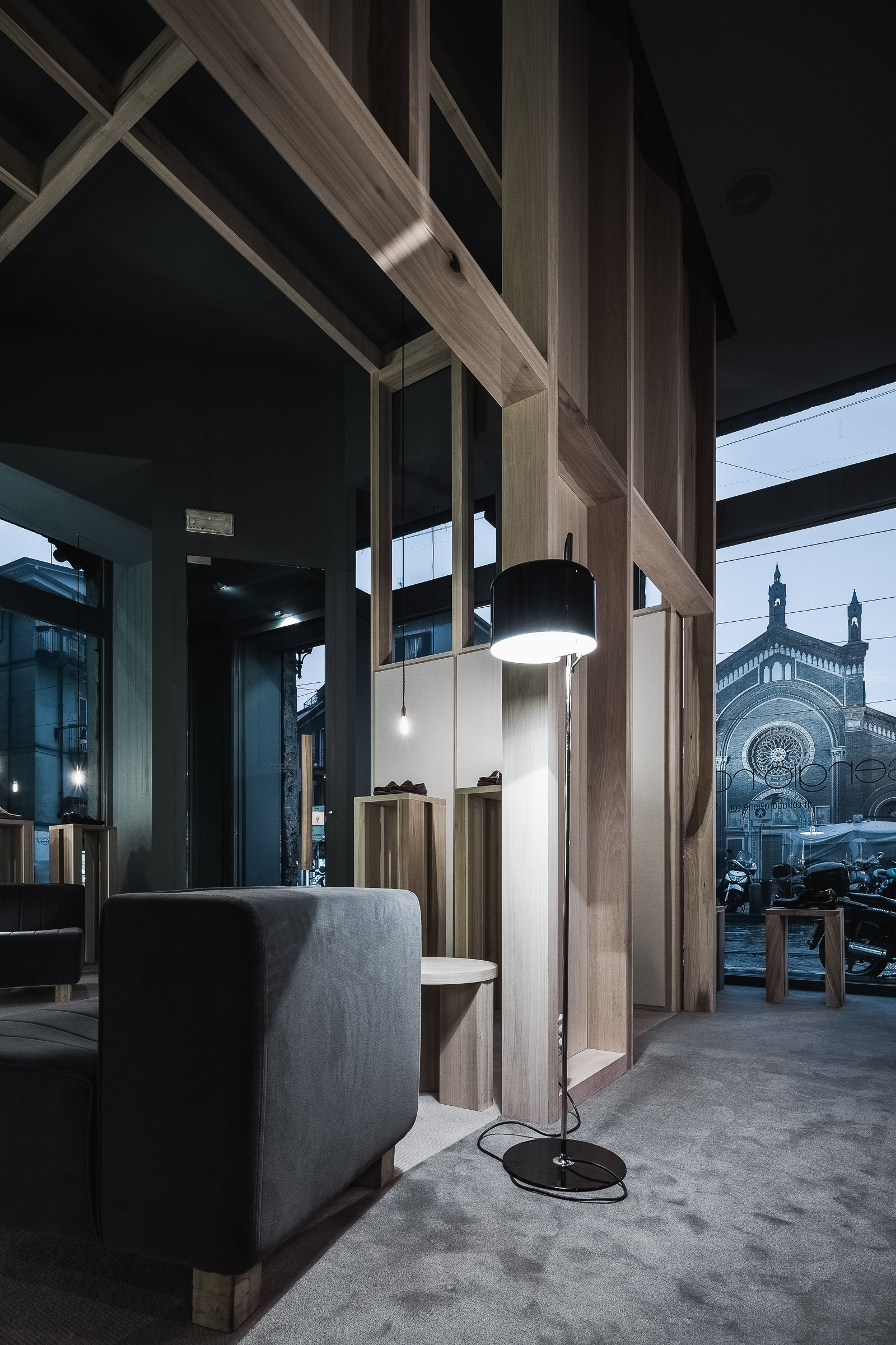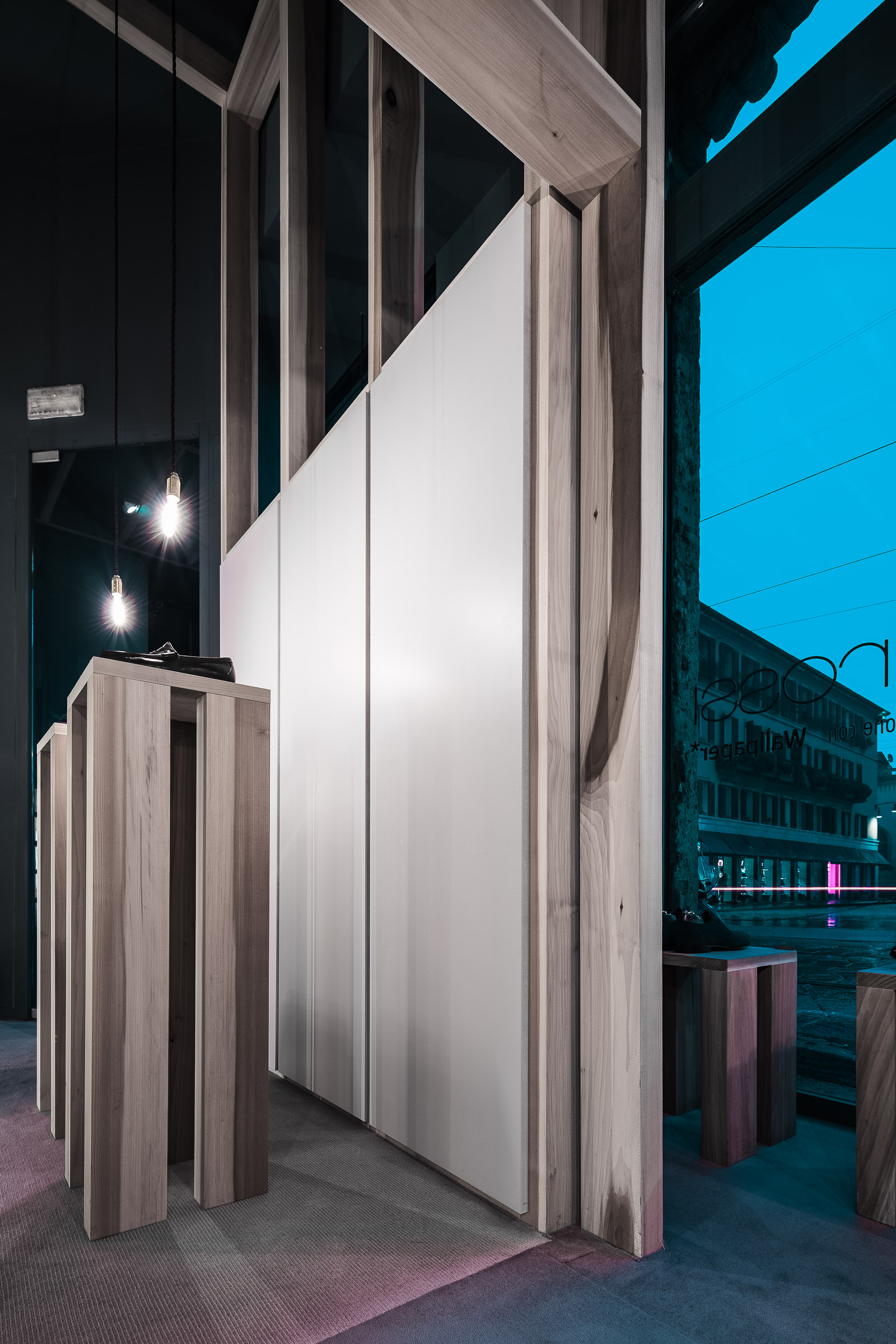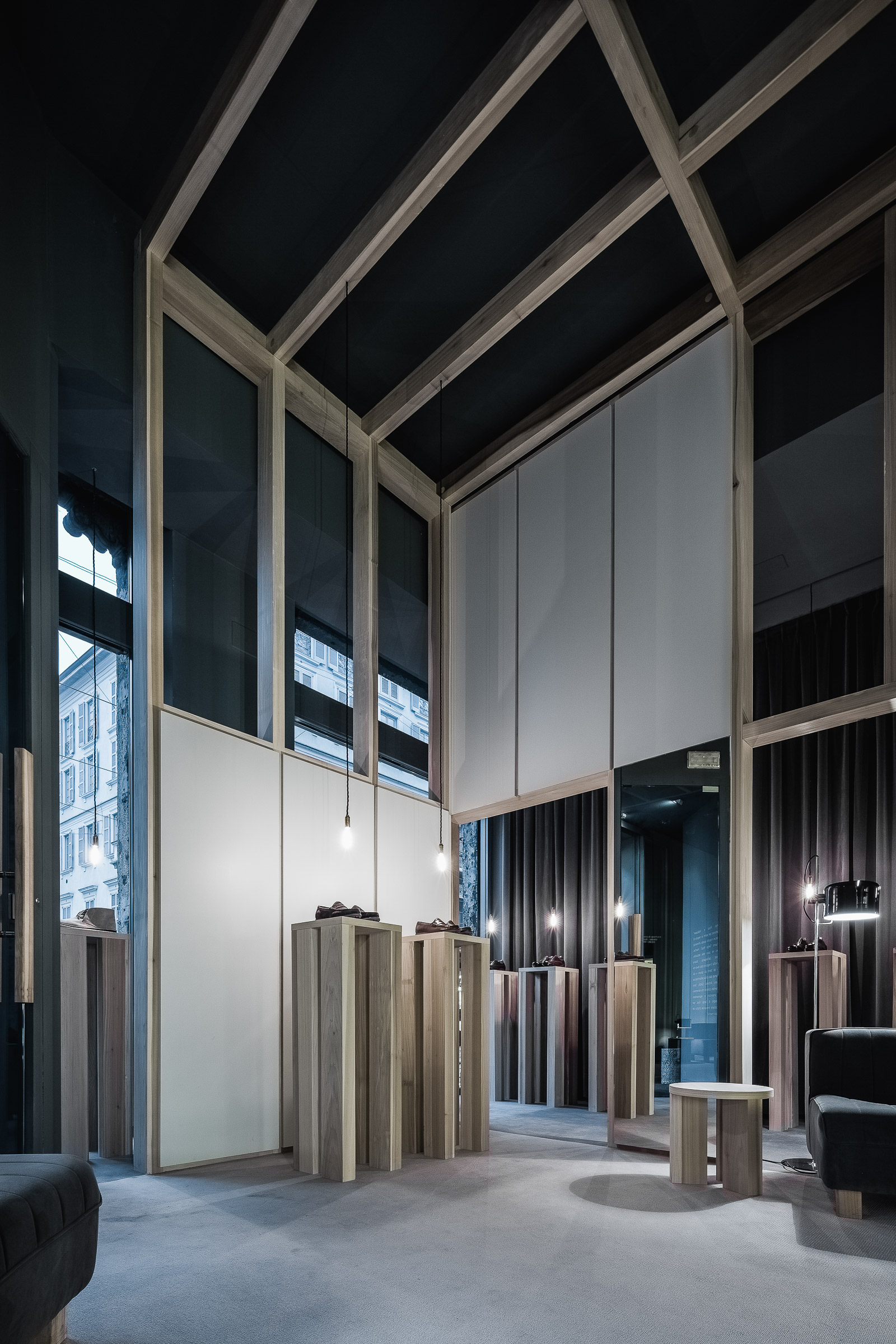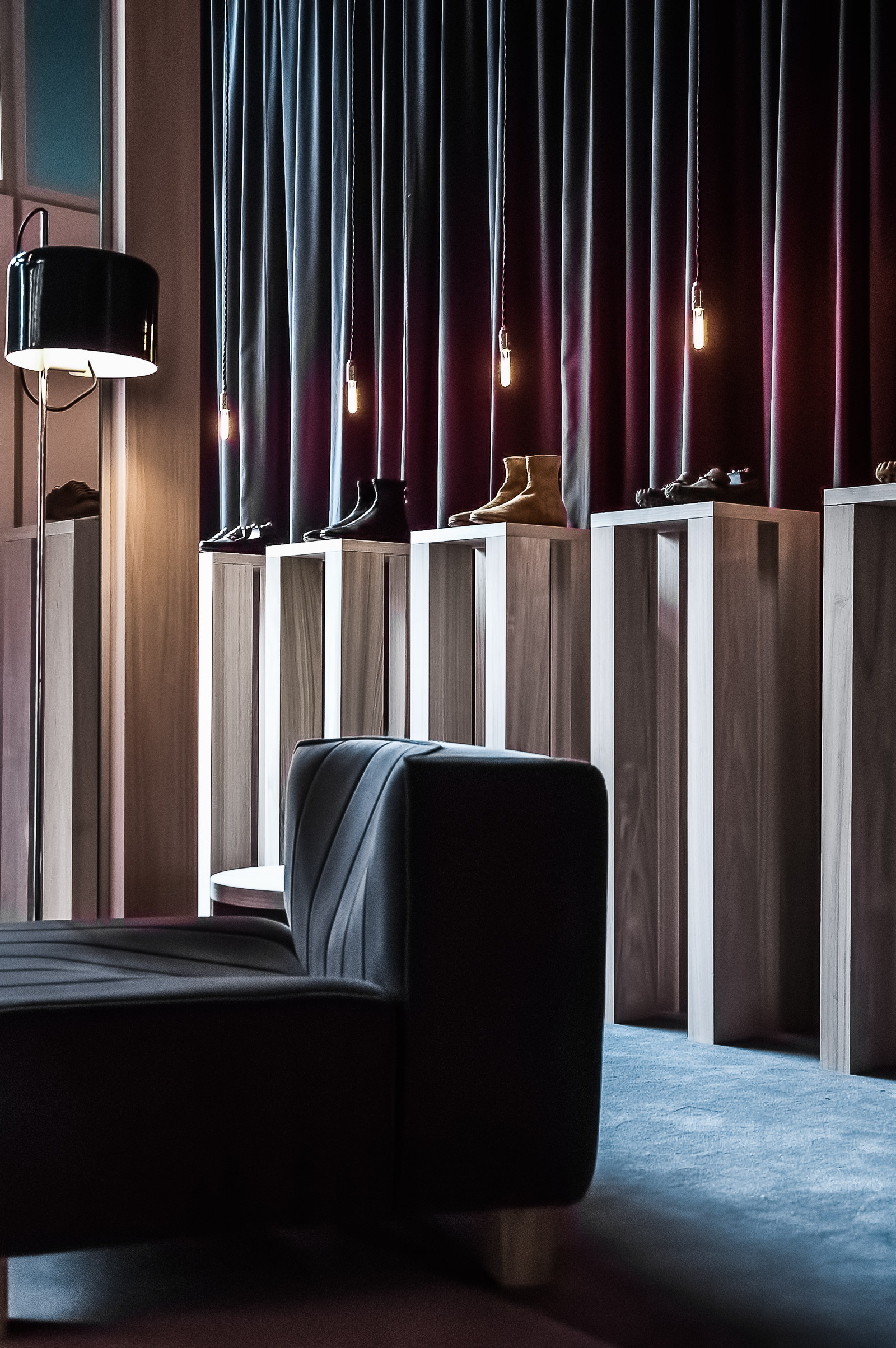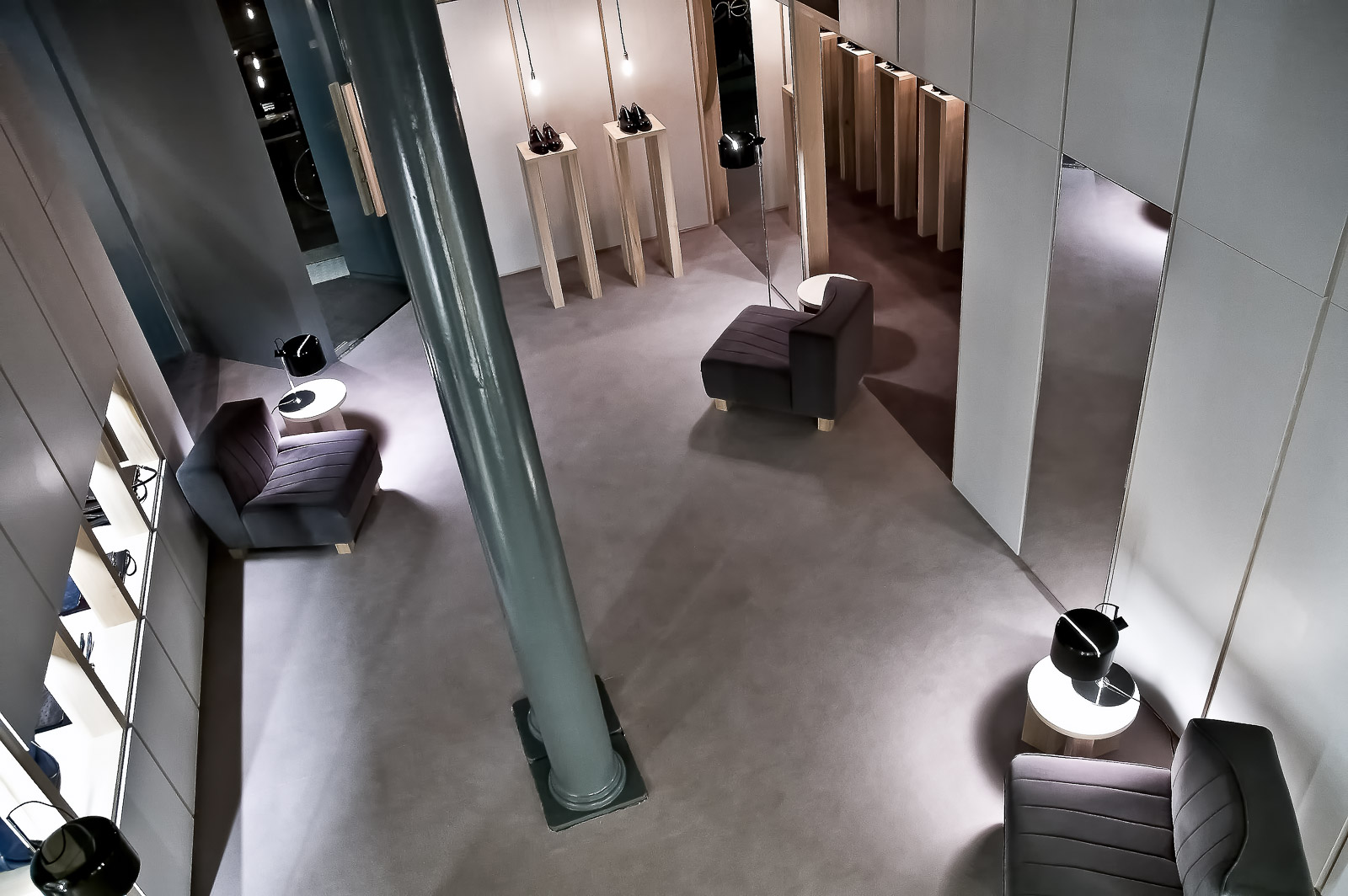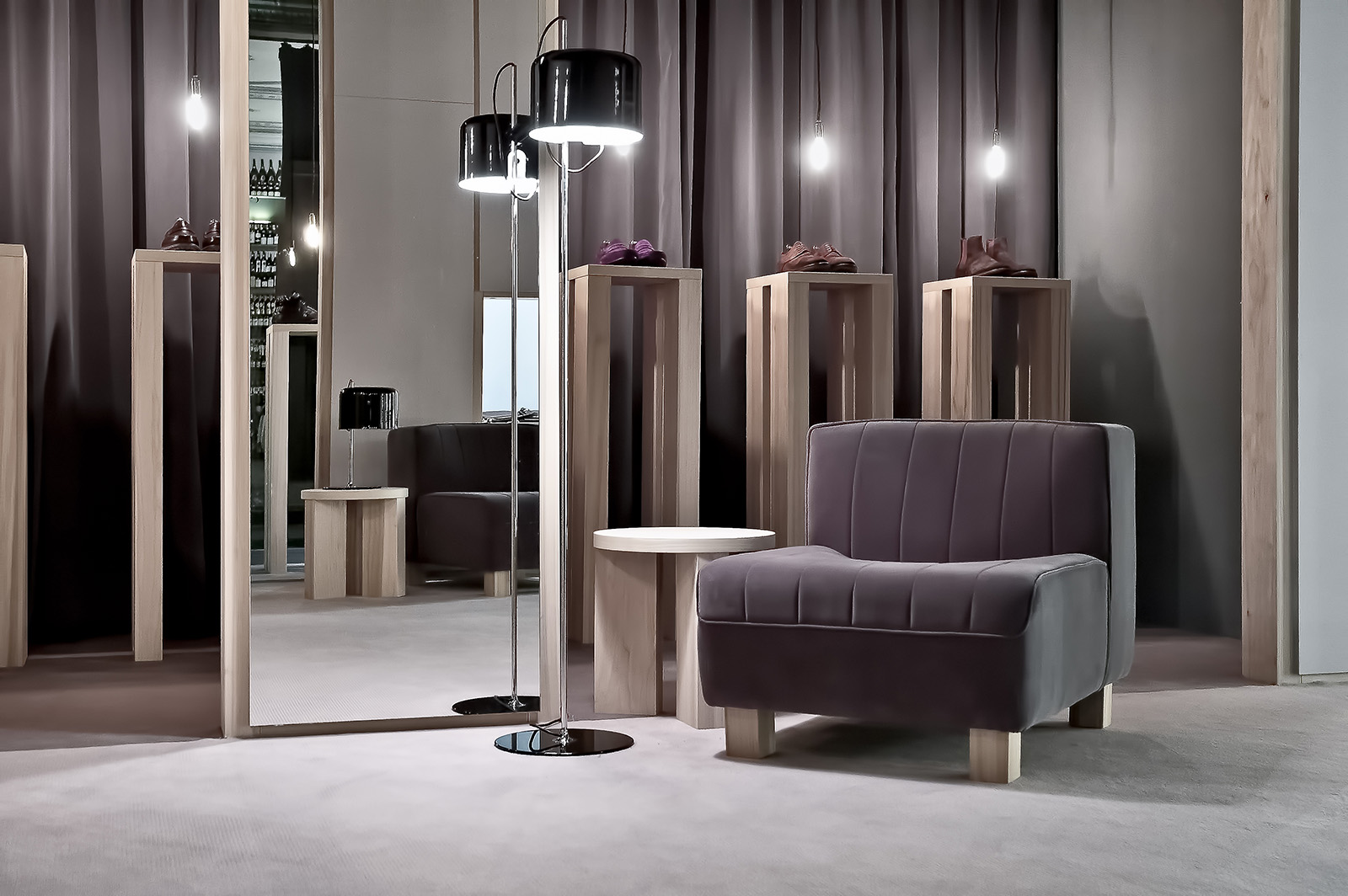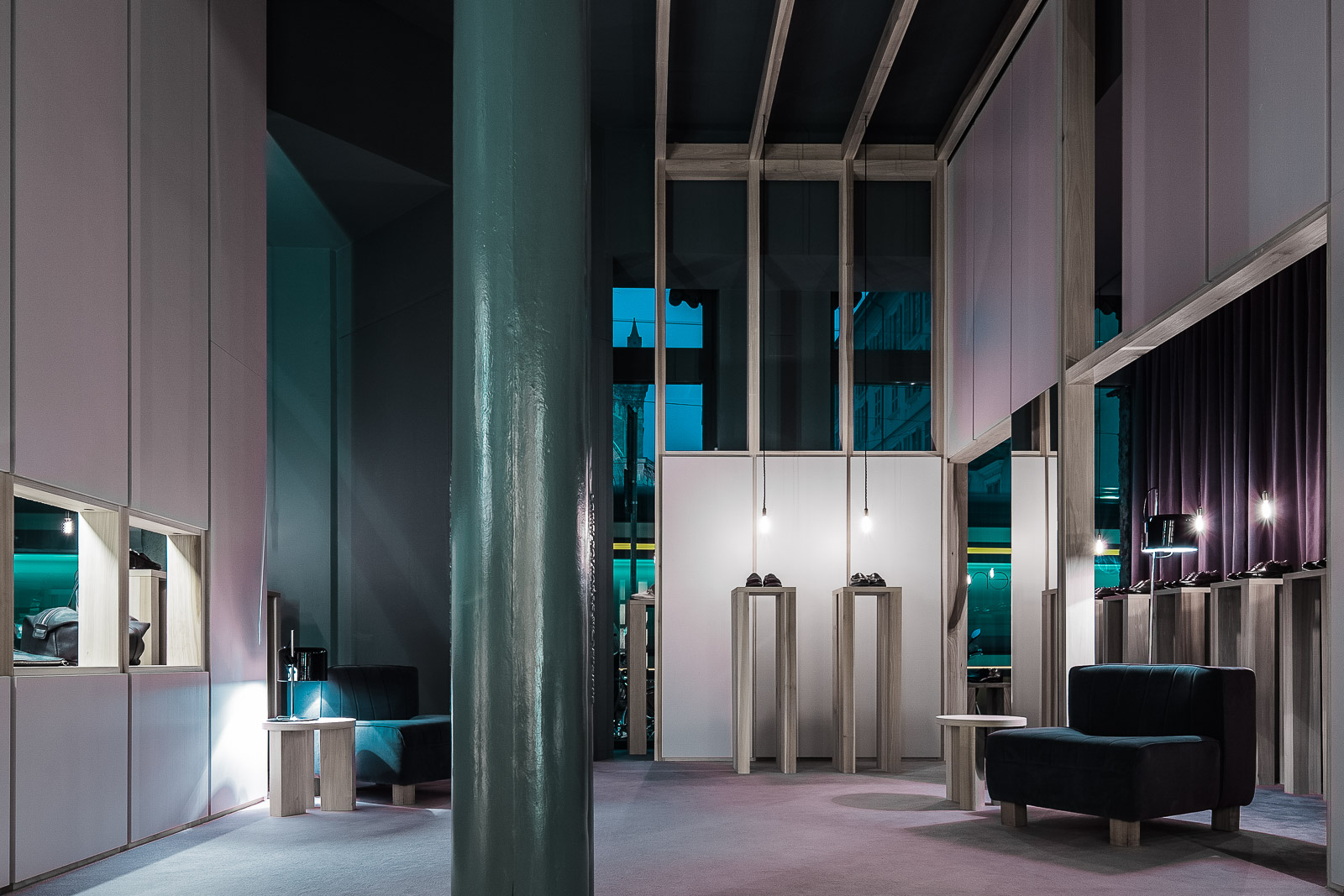The separation from the pre-existing building, made evident by the gap inserted between the old and new masonry, almost takes on the tone of a ‘scientific restoration’ technique.
— Paolo Portoghesi, Il Tempio Malatestiano (1965)
Often cinema and architecture find a common denominator in allegory, as an abstract concept is expressed through an image. In the David Lynch film Inland Empire, Nikki, the protagonist, superimposes her own identity onto the role of the actress that she plays in the story. The narrative structures of the two lives blur. The more it goes on, the more difficult it becomes to discern where Nikki’s life finishes and Sue’s (the part played) begins. Simulation and reality overlap. And this act throws open perspectives to the perception at first concealed, which come to mutate the meanings of each of the two lives.
The temporal production presented here attempts a transliteration of this structural idea in Lynch’s film: architecture for Sergio Rossi creates a game of returns between orders of ideal and reality, between interiors and exteriors. Exchanging dialogue, this architecture overlaps the diverse identities of the place: from the outline of the pre-existing 1980s shop, to the urban backdrop of the medieval Church of the Carmine, to the decorative Art Nouveau pieces of the palazzo in the alley nearby.
So relationships, as well as happening in space, extend also into time, into dialogue, which is also critical interpretation, with signs already in existence. The idea of the insertion of a building into another, is above all a recurring theme in the architecture of the past. From the medieval schola cantorum of the Basilica di Santa Maria in Cosmedin in Rome, to Leon Battista Alberti, who, in the Tempietto in Florence, simulates a miniature of the Sacred Sepulchre in Jerusalem inside a large room, to the Baroque experiences of the chamber of light and of the theatrical stage set, up to the neoclassical canopies of John Soane which, inspired by the unfinishedness of the Roman ruins, seem to fluctuate in a space made of light.
Suggested by the ephemeral canvases of scenography, this system of construction is set out again here according to an Italian metre mutated from the Milanese rationalism of the nineteenth century. But the rational nature of this enclosure, structurally independent of the existing space, is put into doubt by the contradictions that are determined among the diverse identities of the space: that of the installation and the other, residual and amorphous, that of the existing space made homogeneous by a grey-blue colour, and the urban landscape of Brera, time beaten by the episodic passage of the tramways.
Thus the internal space is presented to the observer according to a progressive unveiling of different and partially hidden ambits, which suggests an alternative way to the conventional interior open-space which, as it often offers itself to view from the start, inhibits the imagination.
